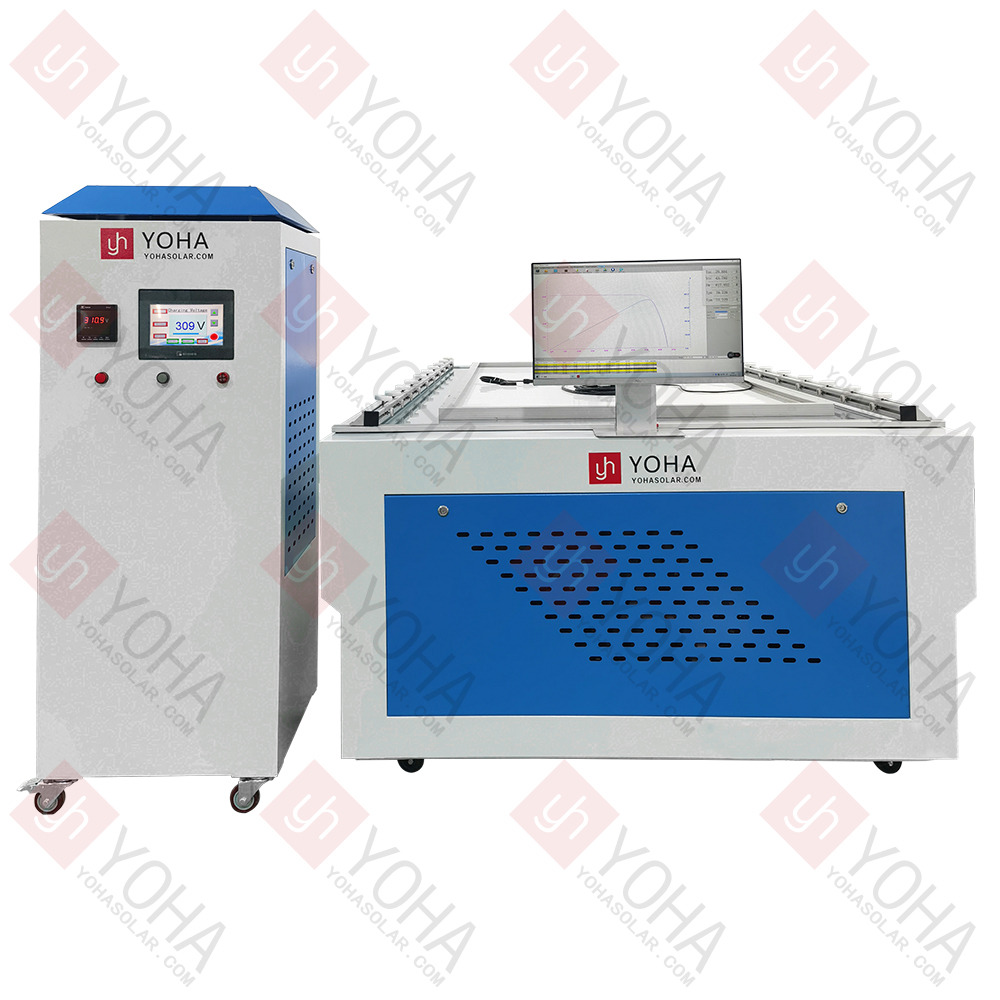Welcome to Wuhan Yoha Solar Technology Co., Ltd!
common problem
Site Map
Language:
 Chinese
Chinese
 English
English
Welcome to Wuhan Yoha Solar Technology Co., Ltd!
common problem
Site Map
Language:
 Chinese
Chinese
 English
English
In the increasingly competitive photovoltaic industry, every segment of the production line directly impacts a company's core competitiveness and ultimate profitability. As the "final gatekeeper" before PV modules leave the factory, the accuracy of the IV tester not only determines the power rating of the product but also directly affects the company's brand reputation and the actual power generation revenue of the power plant. Therefore, selecting a high-performance, stable, and reliable IV tester for the production line is a crucial strategic decision. So, faced with a multitude of complex models and technical parameters on the market, which core elements should we prioritize?
I. Accuracy and Stability: The Cornerstone of Test Data
For any testing equipment, its primary value lies in providing reliable data. For IV testers, accuracy and stability are the non-negotiable foundation.
Measurement Accuracy: This is the soul of the IV tester. It directly determines the accuracy of key parameters such as Peak Power (Pmax), Open-Circuit Voltage (Voc), Short-Circuit Current (Isc), and Fill Factor (FF) that you assign to the modules. Typically, industry-leading testers can achieve measurement accuracy for current, voltage, and power of ±0.5% or even higher. A slight deviation in accuracy can be drastically amplified in mass production, leading to serious power binning errors or potential risks of overrated power labeling, causing significant economic and reputational losses for the company.
Long-Term Stability: Production lines require stable output 24/7. An excellent IV tester must not only be accurate upon initial use but also maintain its initial precision after thousands of tests. This relies on high-standard component selection, rigorous circuit design, and excellent temperature drift control technology. Choosing equipment with high long-term stability means lower calibration frequency, fewer misjudgment risks, and higher production efficiency.

II. Testing Speed and Production Capacity Matching: Efficiency is the Lifeline
In modern automated PV production lines, cycle time is paramount. As a key node in the production line, the testing speed of the IV test must seamlessly match the overall line capacity.
Single Test Time: The complete cycle time, from module positioning and test initiation to data collection completion, is the core indicator for measuring testing speed. Excellent testers can complete a full IV curve scan within seconds. You need to assess whether this speed meets the cycle time requirements of your current and future planned production lines, avoiding the testing The link is coming a production bottleneck.
Dynamic Response Capability: This refers not only to the scanning speed of the electronic load but also includes the synchronization ability with automated equipment such as robotic arms and conveyor belts. Fast signal response and processing capabilities ensure testing begins the moment the module moves into position and data is transmitted immediately after the test ends, achieving a "zero-wait" smooth production flow.
III. Spectral Matching and Light Intensity Uniformity: The Art of Simulating Real Sunlight
The core of IV testing is simulating Standard Test Conditions (STC: 1000W/m², 25°C, AM1.5), and the fidelity of this simulation directly depends on its internal light source system.
Spectral Matching: Sunlight has a continuous spectrum, while the spectrum of the pulsed xenon lamp or LED array light source used by the tester inevitably differs from real sunlight. International standards (e.g., IEC 60904-9) have clear classifications for spectral matching, from A+ to C. Prioritizing equipment that meets Class A standards ensures accurate evaluation of the spectral response characteristics of various cell technologies (such as PERC, TOPCon, HJT, etc.), avoiding test deviations for components of different technological routes due to spectral mismatch.
Light Intensity Uniformity: The light intensity on the test plane must be highly uniform. Non-uniform illumination causes varying current generation capabilities in local areas of the module, resulting in IV curves showing "steps" or "distortions" and seriously underestimating the module's true power. A highly uniform light source (typically required to be better than ±2%) is the physical prerequisite for obtaining smooth and accurate IV curves.
IV. Test Range and Future Adaptability: Building in Room for Technological Iteration
PV technology is evolving rapidly, and the power, current, and voltage levels of modules are constantly increasing. Therefore, the testing range of the equipment must be forward-looking.
Voltage and Current Ranges: Ensure the maximum voltage and current ranges of the tester can cover all product models you currently produce, and fully consider future increases in current due to the adoption of efficient technologies like half-cut, multi-busbar, and shingled cells, as well as voltage increases from higher series cell counts. Choosing equipment with a "more than sufficient" range provides a safe window for future technological upgrades.
Compatibility with Multi-Busbar and High-Power Modules: With the proliferation of MBB (Multi-Busbar) and even busbar-less technologies, the probe layout and connection methods of the tester need to ensure stable, low-resistance contact with all busbars. Furthermore, whether the testing system has the capability to perform rear-side gain testing for bifacial double-glass modules is also an important consideration.
V. Equipment Reliability and Maintenance Costs: The Value of Total Lifecycle Investment
Viewing the IV tester as a long-term investment, its reliability and maintenance convenience directly relate to the Total Cost of Ownership (TCO).
Core Component Lifespan: Focus on the lifespan and replacement cost of key components like the flash lamp (e.g., xenon lamp). Long-life lamps mean less downtime and lower consumable costs.
Calibration Cycle and Convenience: Understand the recommended calibration cycle for the equipment and whether the calibration process is straightforward. Equipment that supports fast, online calibration or has good calibration traceability can significantly reduce the impact of maintenance on production.
Structural Design and Heat Dissipation: Robust mechanical structure and good thermal design are the foundation for the long-term stable operation of the equipment in high-temperature, dusty industrial environments.
VI. Software and Data Management System: The Bridge from Data to Insight
Hardware is the body, but software is the brain. A powerful software system maximizes the value of test data.
User Interface and Ease of Use: An intuitive and user-friendly operation interface reduces operator training costs and minimizes human error.
Data Analysis and Diagnostic Functions: The software should not only display the IV curve and key parameters but also possess powerful data analysis capabilities, such as automatically identifying curve anomalies (shading, micro-cracks, shunt resistance issues, etc.), performing Statistical Process Control (SPC) analysis, and generating diverse reports, providing deep insights for process improvement.
System Integration Capability: An excellent tester should easily integrate with the company's existing Manufacturing Execution System (MES) and ERP systems, enabling full-process traceability and management of production data, helping to build an intelligent, digital "Smart Factory."
Summary
Selecting an IV tester for a PV production line is a systematic project that requires a comprehensive balance of technology and economics. It is far from a simple parameter comparison but rather a deep alignment with the company's quality strategy, production capacity planning, and technology roadmap. We recommend treating measurement accuracy and stability as the unshakable baseline, considering testing speed and light source quality as the core guarantees for efficiency and accuracy, while using a forward-looking test range to cope with technological changes, and optimizing long-term ROI with excellent reliability and intelligent software. Only in this way can you equip your production line with a pair of "penetrating eyes," ensuring that every module leaving the factory truly lives up to its name, laying a solid quality foundation in the fierce market competition.
keywords:TOP
18086473422
MESSAGE
